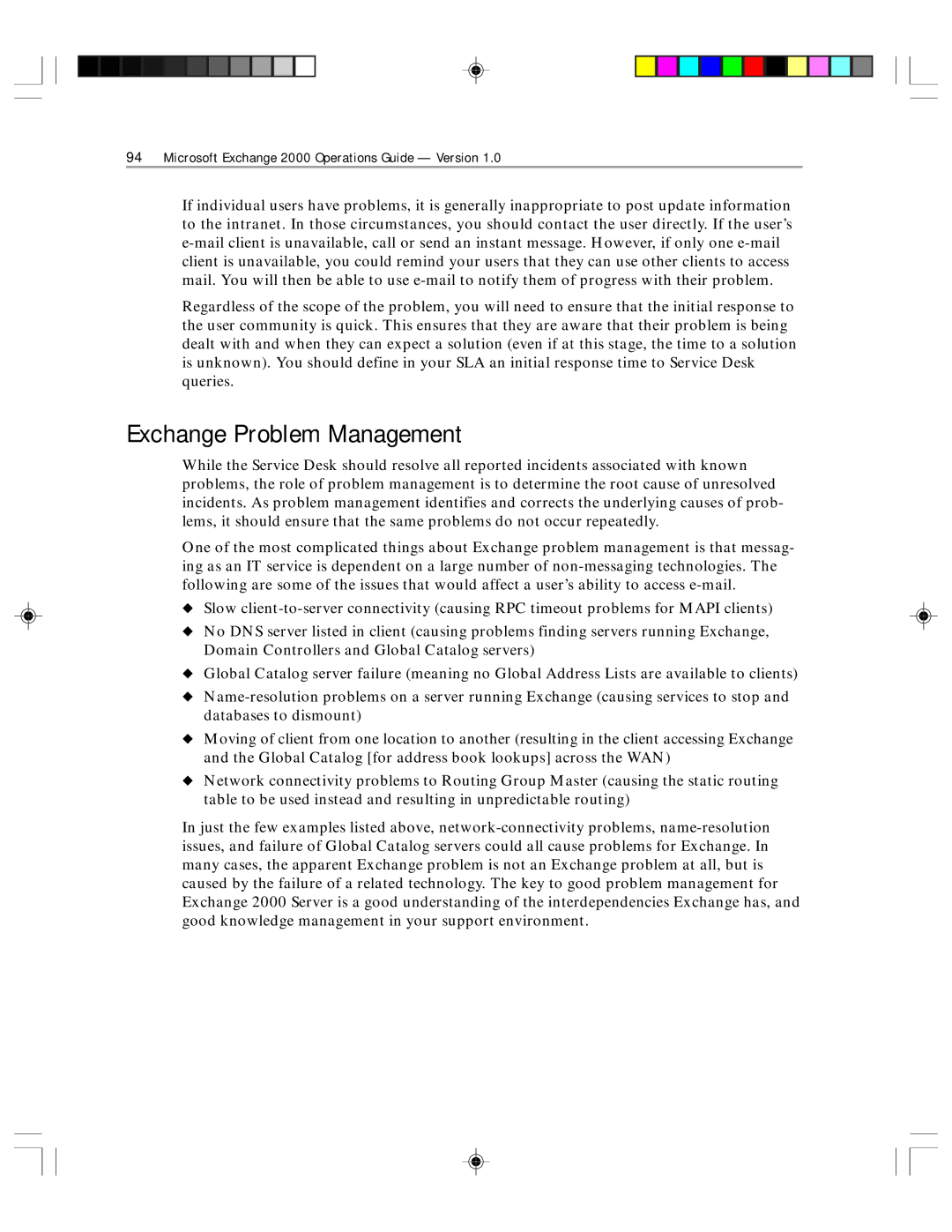
94Microsoft Exchange 2000 Operations Guide — Version 1.0
If individual users have problems, it is generally inappropriate to post update information to the intranet. In those circumstances, you should contact the user directly. If the user’s
Regardless of the scope of the problem, you will need to ensure that the initial response to the user community is quick. This ensures that they are aware that their problem is being dealt with and when they can expect a solution (even if at this stage, the time to a solution is unknown). You should define in your SLA an initial response time to Service Desk queries.
Exchange Problem Management
While the Service Desk should resolve all reported incidents associated with known problems, the role of problem management is to determine the root cause of unresolved incidents. As problem management identifies and corrects the underlying causes of prob- lems, it should ensure that the same problems do not occur repeatedly.
One of the most complicated things about Exchange problem management is that messag- ing as an IT service is dependent on a large number of
◆Slow
◆No DNS server listed in client (causing problems finding servers running Exchange, Domain Controllers and Global Catalog servers)
◆Global Catalog server failure (meaning no Global Address Lists are available to clients)
◆
◆Moving of client from one location to another (resulting in the client accessing Exchange and the Global Catalog [for address book lookups] across the WAN)
◆Network connectivity problems to Routing Group Master (causing the static routing table to be used instead and resulting in unpredictable routing)
In just the few examples listed above,
